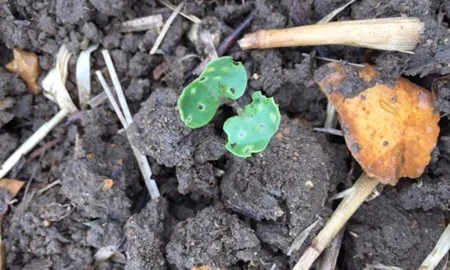
Research scientist, Dr Sam Cook believes Carabid beetles, rove beetles, spiders and parasitic wasps all have an important role to play in the more integrated management of cabbage stem flea beetle essential to the future of UK oilseed rape growing.
Author
| 16th March 2021Tags
Benefitting the Beneficials for CSFB Management
Carabid beetles, rove beetles, spiders and parasitic wasps all have an important role to play in the more integrated management of cabbage stem flea beetle essential to the future of UK oilseed rape growing, believes senior Rothamsted research scientist, Dr Sam Cook. But only if they have the right conditions to survive and thrive in modern rotations.
To help growers and their agronomists provide these, Dr Cook and her colleagues have been gaining an increasingly valuable understanding of the biology and behaviour of a surprising range of natural CSFB enemies in recent years. In addition to a large number of generalist ground predators of cabbage stem flea beetle eggs and larvae, their work extends to both adult and larval parasitoids offering useful potential for biological control.
“First reared from cabbage stem flea beetle at Rothamsted in 1996, Microctonus brassicae was only described in 2020,” Dr Cook explains. “The only known parasitoid of adult CSFB, this tiny wasp injects its eggs directly into the beetles where their larvae feed before emerging from the dead hosts to pupate in the ground. Underlining its value, our monitoring has revealed parasitism rates of up to 30% across the county.
“Another parasitic wasp, Tersilochus microgaster which lays its eggs into the larvae through OSR stems looks like being widespread enough to be valuable too. Its larvae also pupate in the soil, but not until the spring, with the adults emerging in the following crop – usually wheat.
“We don’t yet understand the extent to which field margins, beetle banks or conservation headlands support and protect either of these beneficials in the way we know these habitats do with ground predators. Nor do we yet have sufficient knowledge of how far they can travel or their spatial activity across rotations.
“However, their life cycles make both species vulnerable to pyrethroid spraying. With resistant CSFB populations as widespread as they are, autumn OSR sprays are likely to be more damaging to M. brassicae as well as to predatory beetles and spiders – than to their hosts in many cases. Spraying for pollen beetle in April as well as any insecticide use in cereal crops following oilseed rape clearly has the potential to harm Tersilochus populations, in particular.
“We know deep tillage can be disrupting for Tersilochus too, burying pupae to a depth from which the adult wasps find it hard to emerge,” she adds. “More than minimal tillage can also be damaging to ground predators including the carabid beetle, Trechus quadristriatus we know has a good appetite for CSFB eggs and young larvae before they burrow into the oilseed rape plants.”
With their growing knowledge of the biology and behaviour of these and other beneficials, Dr Cook and her Rothamsted colleagues recommend the following five management pointers to making the very most of their value in battling the beetle:
1. Avoid insecticide spraying wherever possible – certainly in the autumn when there is no OSR canopy to protect predators or adult parasitic wasps but also in the spring and in following crops.
2. Till the ground as shallowly as you can in the rotation – to avoid burying parasitic wasp pupae too deeply and disrupting ground predator foraging.
3. Provide diverse field margin habitats to support the richest insect populations – including tussocky grasses favoured by ground beetles and pollen/nectar resources that may be valuable for other species.
4. Consider improving the micro-climate and diversity within the establishing OSR crop with long stubbles or nurse cropping – to encourage greater predator activity and better protection from birds.
5. Look more holistically across the farm and rotation to activities that build the most diverse and robust insect populations – including the value of well-managed hedgerow, tree and other non-cropped habitats.
“In developing the most sustainable IPM strategies there’s a lot more we need to understand about the dynamics of pest, predator and parasitoid populations,” concludes Dr Cook. “But with what we know already there’s plenty we can do to help redress an ecological balance that can do much to improve the consistency of OSR performance. And the more we learn though fresh approaches like those being developed in the EcoStack project and the Rothamsted Large Scale Rotation Experiment (LSRE) now underway at Harpenden and Brooms Barn, the more successful we will be in doing so.”